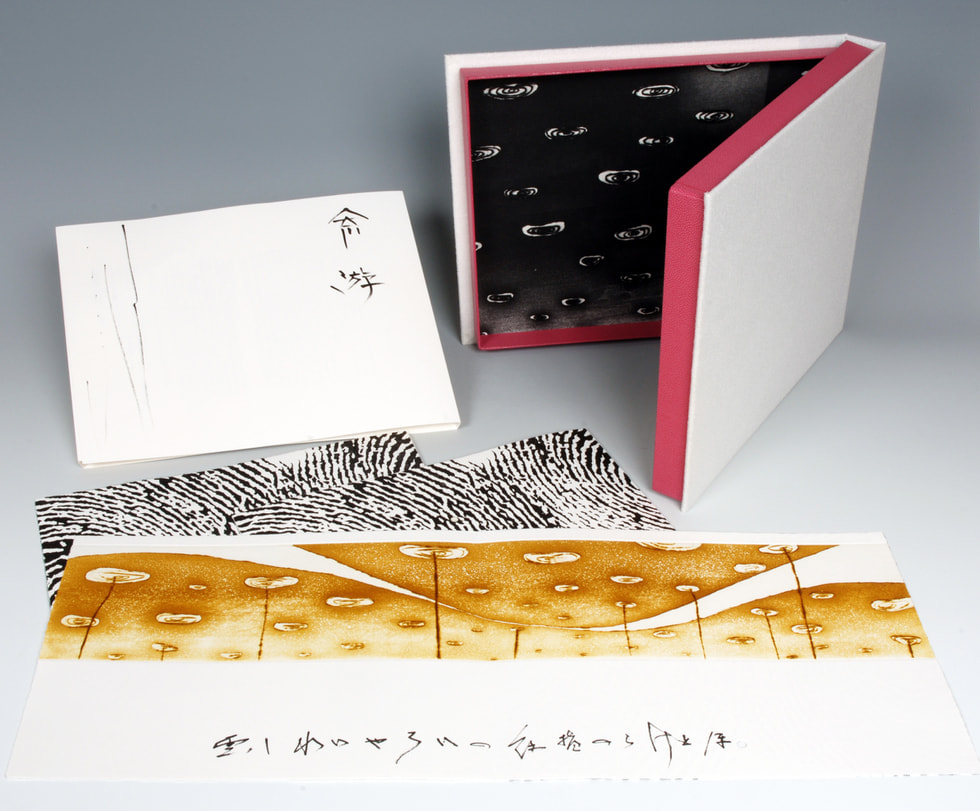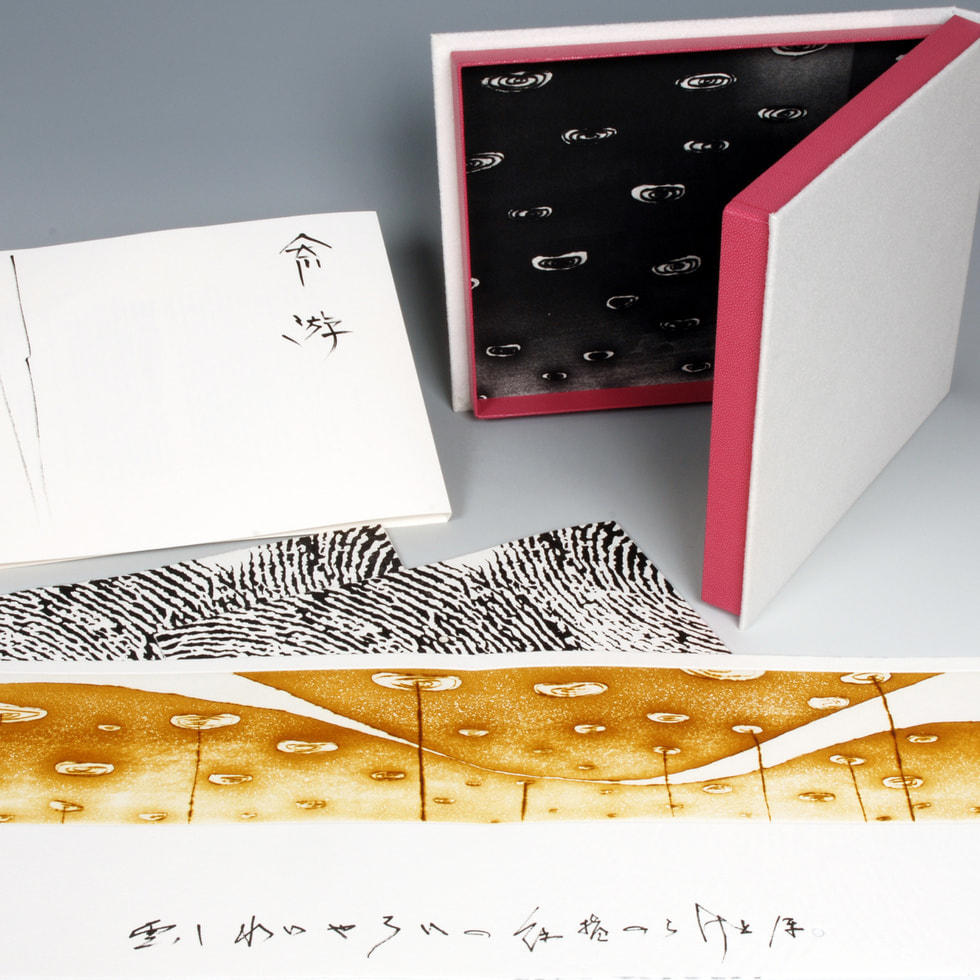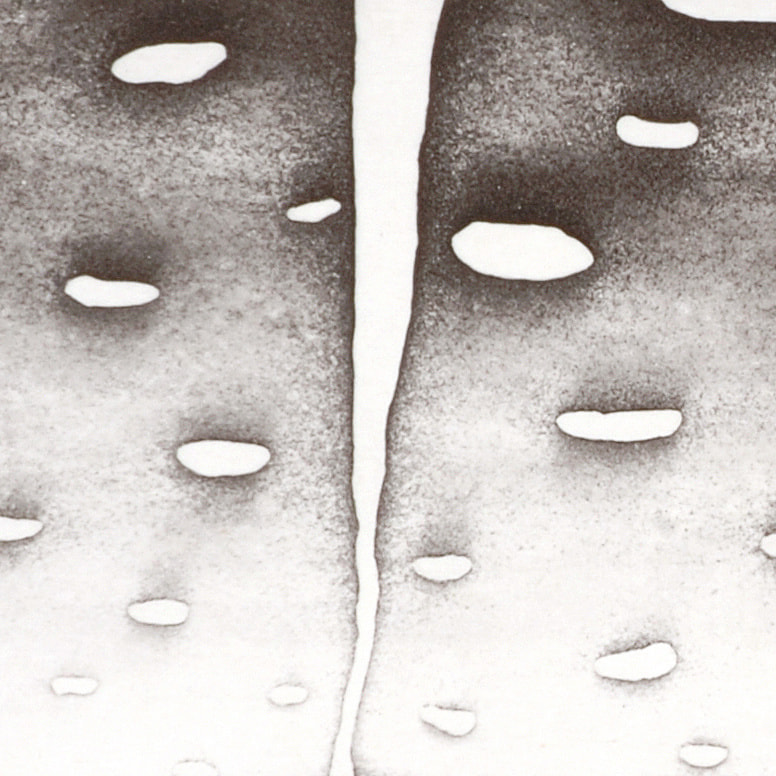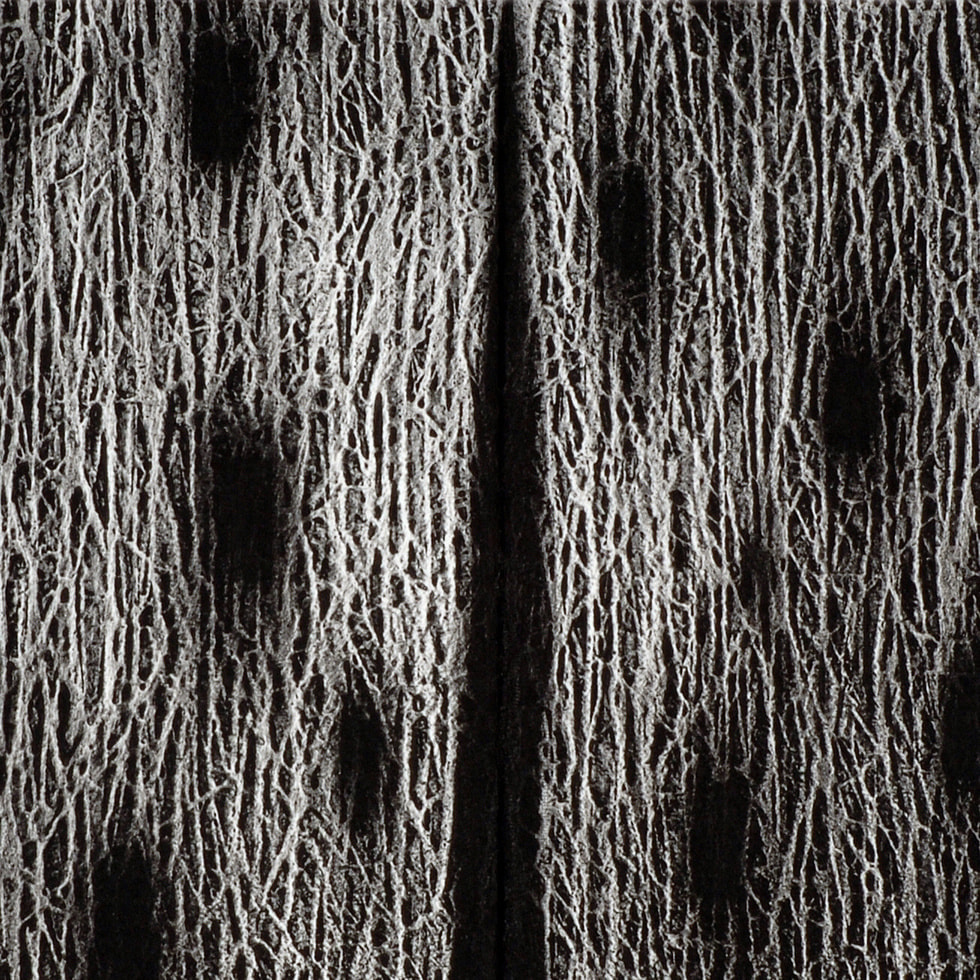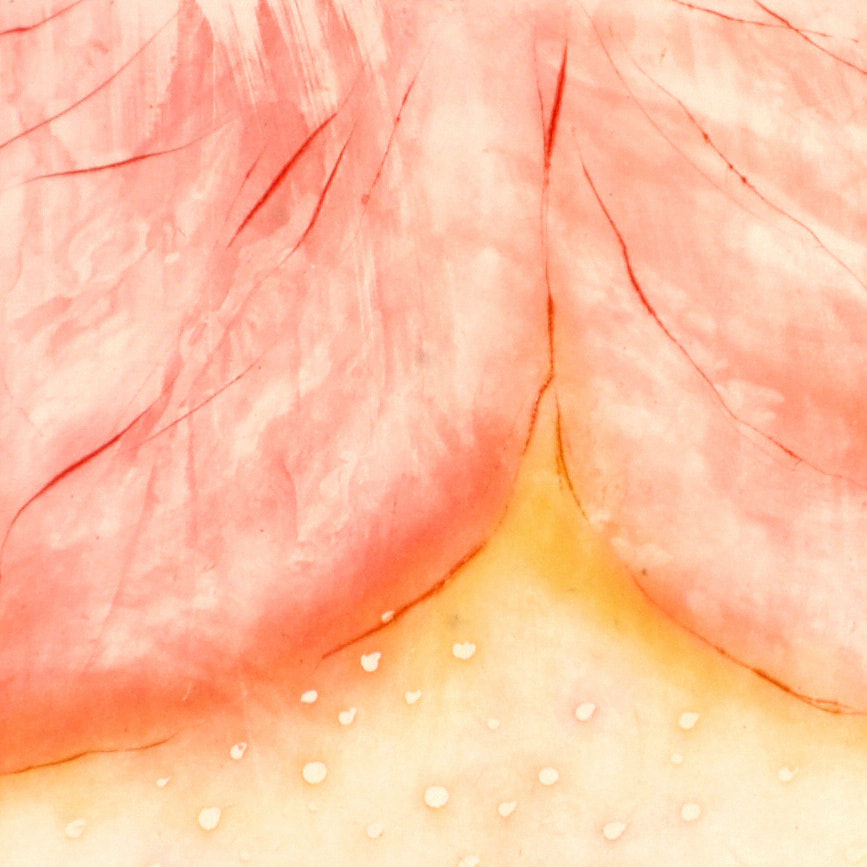Itoyu - A Collection of Poems and Prints
I sometimes look up at the night skies and ponder various things.
For example, I think about the spacecraft Voyager; a long time has already passed since it took off from the earth.
For example, I think about the spacecraft Voyager; a long time has already passed since it took off from the earth.
It left for unexplored regions with the task of realising a great dream: to send a message to unearthly life forms. It seems that our unseen friends have not yet replied.
We overlap our creative dreams with the exploring minds of scientists, which look as if they were trying to grasp the dust of the vast cosmos.
The eyes of Shukaku, a haiku poet, might be able to see each one of the things that has taken place in the triple-thousand great one-thousand worlds (that is, during many, many years) as clearly as if seeing them in a slow-motion picture. None of them are meaningless. However, we are too busy to see them, and instead to our eyes they seem as if they are not just stationary, but flowing away. However, he can catch, using his invisible hand, everyday scenes that nobody else would recognise; his acute antenna is like Itoyu (a spider's thread) flowing together with cherry blossoms in the wind. The exquisite refinement of Shukaku's senses is interconnected with eternal nature.
Once the tiniest whispers touches his aerial, they are reconstructed into a poetic form of five, seven, and then five sounds without losing their individuality whilst passing through the prism of Shukaku's sensibilities. The reconstructed are released again to the skies of this world, accompanying beautiful colours. The poems contain a musical scale, as if they were sounds from a suikinkutsu, which reached the abyss of my heart, disguised as an accident and since then they have been quietly rippling the sea of my soul.
The melody of fascinating sounds echoes in the skies of my humming mind, changing their expressions as waves and flowing clouds do. I touch his world very softly and deliberately. By repeatedly touching and detaching, over a period of time, I wondered alone in the labyrinth of the words that he had created. From time to time I saw indexes of his words but they appeared and disappeared as if they had been floating stones. They led me not to an exit but brought me closer to a deeper abyss within that world. The universe that he creates seems to be like the perfectly clear surface of water, which is like a mirror to reflect oneself; however, it has a labyrinth where deep-blue water is whirling.
In that world numerous fates and connections relate to each other and thousands of bell peals of words resound; I am swayed and lost. Being rocked softly, I was just floating on the waves and felt as if I had been looking up at the skies absent-mindedly. Some time later, for a single moment, the poems illuminated the attractive illusions like innumerable stars occupying the skies of my mind. They appeared and disappeared, and then they were gone as if they had rejected being fixed upon white paper. However, after a long time the transient illusions have finally joined the poems here and begin together the eternal beats.
These two individuals resonated with each other in the world of sway to create a special world; a world that transcended time and place and that was born here, formed in a white crystal. In this world of shifts and changes the two stars were destined to encounter each other through the ripples of fate, and the pair of the stars shine with a fascinating and glittering light. I feel that this light might have been one of the fates that had been inscribed in the universe of the two from the beginning.
Masaaki Ohya on the 10th of March, 2008
The Origin of Itoyu (a collection of poems and prints) and the Initial Encounter of the Two Protagonistsu
It may be a little unfair to say that one calligraphic method of creating something which is recognisable as neither characters nor pictures should be called an 'avant-garde calligraphy'. The calligraphers say that they are very serious, but to the untrained eye their creations are puzzling and I still wonder whether they are pictures or characters. In a painting context it would be categorised as abstraction.
Fate decreed that I started a friendship with Mr. T, a renowned avant-garde calligrapher, and through him, little by little, I got to know the world of avant-garde calligraphy. Time passes quickly and since then more than ten years have already passed.
It is magical when good fortune develops further, involving a number of connections as it ripples out in waves.
Some years ago I heard of Shukaku, a calligrapher, for the first time when Mr. T said to me, 'There is a young avant-garde calligrapher who is interested in your print works.'Soon after that, at my solo exhibition in Kyoto during the summer, he visited me early one morning with a bouquet of flowers. He talked enthusiastically about prints and we each immediately recognised a kindred spirit in the other. I asked him, 'Why don't you try printmaking?' I invited him to make some prints with me, which developed our friendship further. He had had a long-held desire to try printmaking and some time after our first meeting, he finally succeeded in making his own prints at my studio. On the way back from the studio, he said, 'As a matter of fact, I am not only a calligrapher but also a haiku* poet. Would you please read my works of haiku?' I cannot recall now how this conversation came about.
It was in this way that I first received his works of haiku and they touched my heartstrings immediately. It was in exactly this manner that my chance of a lifetime, to realise my desire to make a collection of poems and prints, came about. Whenever I remember this, I always think that an encounter is somewhat similar to an unpredictable earthquake. I felt that haiku poetry was an unknown and very difficult area for me, but his poetic creations were more than attractive enough to encourage me to produce my first collection of poems and prints.
I decided to take time to defrost his creations and to project them upon my world. I think that it is important for the appreciation of haiku whether we can instantly feel sympathy towards it or not; I know that it is not something that we understand by using our heads. However, once I tried to slowly analyse them, one by one from multiple points of view, interestingly different worlds appeared.
The title of 'itoyu' is a kigo (seasonal word)* for spring and has its origin in the idea that a spider's thread is seen bending before the wind at the beginning of the spring season. It is a verbal expression of an uncertain view of the thread appearing and disappearing with the wind. This seasonal word, 'itoyu', also designates the same meaning of another word 'yoen' that describes an uncertain world. For the naming I wanted to project his invisible hands, which are capable of grasping the trivial mundane matters of this world, upon a spider's thread flowing in the spring sky. Various titles came to mind from his worldview; however, this title became unchangeable once I thought about his delicate sensitivity towards all things in this world.
He is very sensitive and his eyes frequently catch usually unnoticed scenes. Using these keen senses, he creates liberal pieces of haiku in a 'natural/cosmic' way. My sensibilities, which he describes as something of an architect, have a totally different perspective from his so that my creations are the result of my 'observation and consideration'.
My print works featured in this collection were created through my observation and consideration of his world for almost a year and the works gained new additional elements that were absent in my previous work. In return for my creative exploration, he kindly created calligraphy directly upon each print in the collection. This is the current fruit of the game 'catch' that we have continuously been playing together.
Amazingly, Shukaku, who had responded to my creative world of print and by doing so discovered me, was indeed the poet for whom I had always been waiting. All I can say is that fate can do really magical things.
I will think the same whenever I open this box.
Fate decreed that I started a friendship with Mr. T, a renowned avant-garde calligrapher, and through him, little by little, I got to know the world of avant-garde calligraphy. Time passes quickly and since then more than ten years have already passed.
It is magical when good fortune develops further, involving a number of connections as it ripples out in waves.
Some years ago I heard of Shukaku, a calligrapher, for the first time when Mr. T said to me, 'There is a young avant-garde calligrapher who is interested in your print works.'Soon after that, at my solo exhibition in Kyoto during the summer, he visited me early one morning with a bouquet of flowers. He talked enthusiastically about prints and we each immediately recognised a kindred spirit in the other. I asked him, 'Why don't you try printmaking?' I invited him to make some prints with me, which developed our friendship further. He had had a long-held desire to try printmaking and some time after our first meeting, he finally succeeded in making his own prints at my studio. On the way back from the studio, he said, 'As a matter of fact, I am not only a calligrapher but also a haiku* poet. Would you please read my works of haiku?' I cannot recall now how this conversation came about.
It was in this way that I first received his works of haiku and they touched my heartstrings immediately. It was in exactly this manner that my chance of a lifetime, to realise my desire to make a collection of poems and prints, came about. Whenever I remember this, I always think that an encounter is somewhat similar to an unpredictable earthquake. I felt that haiku poetry was an unknown and very difficult area for me, but his poetic creations were more than attractive enough to encourage me to produce my first collection of poems and prints.
I decided to take time to defrost his creations and to project them upon my world. I think that it is important for the appreciation of haiku whether we can instantly feel sympathy towards it or not; I know that it is not something that we understand by using our heads. However, once I tried to slowly analyse them, one by one from multiple points of view, interestingly different worlds appeared.
The title of 'itoyu' is a kigo (seasonal word)* for spring and has its origin in the idea that a spider's thread is seen bending before the wind at the beginning of the spring season. It is a verbal expression of an uncertain view of the thread appearing and disappearing with the wind. This seasonal word, 'itoyu', also designates the same meaning of another word 'yoen' that describes an uncertain world. For the naming I wanted to project his invisible hands, which are capable of grasping the trivial mundane matters of this world, upon a spider's thread flowing in the spring sky. Various titles came to mind from his worldview; however, this title became unchangeable once I thought about his delicate sensitivity towards all things in this world.
He is very sensitive and his eyes frequently catch usually unnoticed scenes. Using these keen senses, he creates liberal pieces of haiku in a 'natural/cosmic' way. My sensibilities, which he describes as something of an architect, have a totally different perspective from his so that my creations are the result of my 'observation and consideration'.
My print works featured in this collection were created through my observation and consideration of his world for almost a year and the works gained new additional elements that were absent in my previous work. In return for my creative exploration, he kindly created calligraphy directly upon each print in the collection. This is the current fruit of the game 'catch' that we have continuously been playing together.
Amazingly, Shukaku, who had responded to my creative world of print and by doing so discovered me, was indeed the poet for whom I had always been waiting. All I can say is that fate can do really magical things.
I will think the same whenever I open this box.
Masaaki Ohya on the 10th of March, 2008
